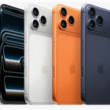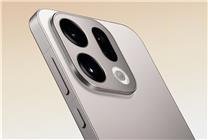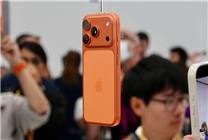iPhone Air Introduces Physical SIM Card Support: A Revolutionary Shift in Technology
Summary:
- Groundbreaking Feature: The iPhone Air has successfully integrated physical SIM card support, significantly enhancing user flexibility.
- Consumer Praise: Users have responded enthusiastically, labeling the development as “really awesome.”
- Innovative Technology: This advancement simplifies the transition from eSIM, providing a seamless experience for users.
The iPhone Air has taken a monumental step in mobile technology by announcing its support for physical SIM cards, a change that has drawn widespread admiration from users and tech enthusiasts alike. The Shenzhen Chaoxue team has been pivotal in this transformation, enabling the device to read and utilize physical SIM cards effectively.
A Pioneering Feature in the Mobile Landscape
The iPhone Air stands out as the first device in mainland China to exclusively support eSIM technology while now also accommodating physical SIM cards. This dual support addresses consumer demands for versatility in mobile connectivity. Many users have taken to social media platforms to express their excitement, with comments celebrating the innovative shift.
Understanding eSIM Technology
The eSIM technology has represented a significant advancement in mobile connectivity. Essentially, it is a SIM card embedded within the device, removing the need for the traditional SIM card slot. The Chaoxue team’s innovation doesn’t merely test the limits of eSIM; rather, it effectively simulates a physical SIM card through software. This breakthrough allows the iPhone Air to recognize what would typically be a standard SIM card as an eSIM.
How It Works:
- The team has developed a method to simulate an activated eSIM using software, leading the device to function as if it is utilizing an eSIM.
- The optimization of network access logic allows users to unlock the full potential of their physical SIM cards.
This approach is particularly advantageous for users traveling abroad, as they can now use local data cards without needing an eSIM setup specific to each region.
Implications for Users and the Industry
The integration of physical SIM card support not only enhances user experience but also sets a precedent in the mobile industry. As smartphones evolve, accommodating physical SIMs alongside eSIMs provides flexibility that many consumers ultimately prefer.
Amidst concerns regarding eSIM reliance—particularly regarding compatibility and ease of use—the adjustment allows users more control over their mobile experiences. This adaptability could potentially lead to increased sales for the iPhone Air as consumers seek devices that meet their connectivity needs.
Community and Market Response
The initial response from users has been overwhelmingly positive, with many praising the Chaoxue team’s ingenuity. Comments across various platforms highlight the excitement surrounding this change, with phrases such as "really awesome" encapsulating the overall sentiment. The adaptation resonates particularly well within a market that increasingly values versatility in mobile devices.
Future Prospects
The success of this development encourages anticipation for future innovations within the mobile technology sphere. The Chaoxue team’s work not only showcases their commitment to enhancing user experience but also indicates a trend towards more flexible mobile solutions that cater to individual consumer needs.
In conclusion, the iPhone Air’s support for physical SIM cards marks a significant advancement in smartphone functionality. By blending traditional SIM technology with modern eSIM systems, this development promises a more seamless and user-friendly mobile experience, which could pave the way for further innovations in the industry.
As the demand for multifunctional devices grows, the iPhone Air’s capabilities stand as a testament to the ever-evolving landscape of mobile technology. This integration not only enhances convenience for users but also redefines connectivity paradigms, establishing a new standard in the market.







